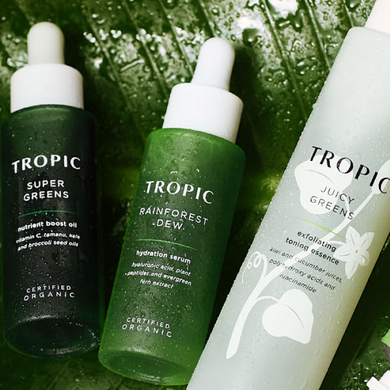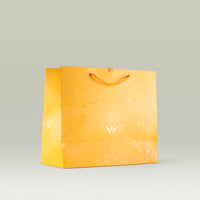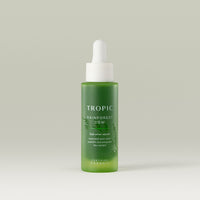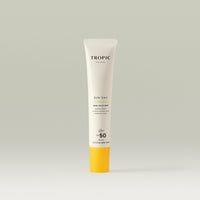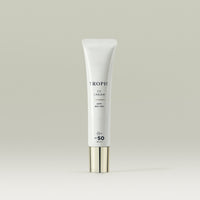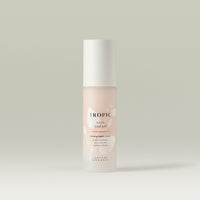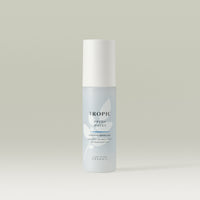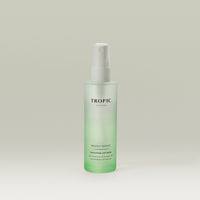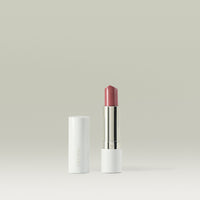Shea butter is oiling up its own chain of supply and fortifying the fields in which it grew, anointing the planet and its people with a more cohesive, conscious future. But, how does using shea mean showing up for women and wildlife in Western Africa?
WHO IS SHEA?
From caressing the complexions of ancient Egyptian royalty to cushioning the pockets of some of the poorest African communities, shea butter has been bettering lives for thousands of years. It has the same chemical makeup as sebum, thus effortlessly mimicking the body’s own natural hair and skin lubricant, while also stimulating the production of collagen and elastin in our cells. While improving skin health may seem – on the surface – why we love shea here at Tropic, the merits of shea tree harvesting take root right at the heart of our ethical epidermis.
The Shea Belt stretches from the far reaches of Senegal to the parched lips of the Sahara Desert, buckling over Ghana, Nigeria and Guinea as it goes. Although shea grows successfully in the West, it’s unique in its prosperity – this land typically constitutes harsh, dry savannah which is almost entirely undeveloped. It’s populated by some of the poorest people in Africa, for whom a crop of shea kernels can mean the difference between being dependent and being free.
Sourcing ingredients in an environmentally-conscious capacity is what we’re all about at Tropic. Tales of tending to the needs of local wildlife; the knowledge that we have enhanced someone’s experience on earth; or bolstering the economies of remote or under-resourced communities, are all primary motivations for doing things the way we do. We want to reach into the crevices of mother earth’s cracked skin, tenderly paving the way for a more solid, steadfast future for anyone who paces the planes of her face.

THE FIGHT FOR FAIR TRADE
Many women all over the world are still reliant on their husbands to earn a household income. This leaves them with tapered access to financial autonomy, especially if they’re left widowed or without a partner. Financial independence is instrumental to the future of the female workforce across the globe, and programmes protecting shea harvests in Western Africa are steadily shaping a small fraction of that future.
By endeavouring to engage with responsible suppliers Tropic has built a relationship with AAK, for whom sustainable sourcing is at their core. The Kolo Nafaso programme – developed and run by AAK – is a direct purchasing scheme that aims to support women wild-harvesting shea kernels across Western Africa. Literally translated, Kolo Nafaso means ‘house of benefits of shea kernels’. The programme – which has over 307,000 women enrolled – initially launched in Burkina Faso in 2009 and now spans across multiple countries, including Burkina Faso, Ghana, the Ivory Coast and most recently Nigeria. And, according to the National Research Council, harvesting shea nuts provides 20 per cent of household income on average in the area of Burkina Faso (Lost Crops of Africa VII, National Research Council).
The overwhelming responsibilities and fluctuations in resources for women in these countries often serve to knock them off balance. Due to the seasonal nature of shea harvests they spend months of their year tirelessly working to provide for their families, and despite an unfaltering work ethic and laborious hours, set-backs can render hard work fruitless. Pre-financing initiatives offered through the Kolo Nafaso programme erect a pillar of financial stability, so these women can safely prop themselves up during precarious periods. The initiative empowers women with leverage to negotiate their terms and ensures that the nuts can be sold for a fair price.
There was previously a lack of transparency in such sales processes due to an unwanted additional link in the traditional chain of supply, but the programme aims to equip these women with the valuable tools to trade with whomever they choose (aak.com). There are no unwanted contracts tethering them to the weight of disadvantageous clauses and conditions, and the whole system is based on fair trade principles. Where such restrictive practices were clipping their wings to prevent these women from flying to the freedom of financial autonomy, now they are set to soar.
SHEA-DUCATION FOR ALL
The initiative provides a new lens through which shea harvesters can view the production process, arming them with a clear focus on how to process the kernels after harvest and nourish surrounding wildlife and community. By educating these women about how to improve the quality and value of the shea they’re harvesting, the initiative empowers them to enhance their own economic, environmental and social wellbeing.
As well as teaching the value of maintaining shea growth to ensure long term sustainability, harvesters are shown how to apply new technologies; employ efficient cooking methods (using less water and firewood) through the installation of rocket stoves or training on steaming; and initiate personal safety measures to protect themselves from snakes and scorpions during harvest, sun damage to their skin in the heat and exposure to open fires during the potentially dangerous boiling process. Shea harvesting may previously have been synonymous with burnt skin and vicious venom for these women of Western Africa, but this vital education has sealed their faith in their safety at work and afforded them the basic benefit of earning money without damaging their health.
The programme also helps to generate job opportunities in the region and employs local people as extension officers, team leaders, drivers, warehouse workers and administrative staff.

A WORD ON THE WILDLIFE
Shea trees are an essential part of the ecosystem in Western Africa and help to protect from natural environmental processes such as desertification (fertile land becoming desert). By buying Tropic products containing shea butter (hat tip to the glorious Eye Dream) you're helping to improve life on the Shea Belt.
As far as sustainability is concerned, the shea industry plays an important role in helping to maintain a healthy landscape. The agroforestry in place encourages more biodiversity than simply using farmland to grow single crops for hectares at a time. When local farmers clear land to plant other crops in this way, or when they forage for firewood, they will leave the shea tree standing and unharmed, because they know they can use the shea fruit, not just for their own household needs but also to generate additional income for the family. By sparing these trees, the villagers are protecting the land against desertification and lessening the impact of land-clearing on the ecosphere.
Not only is the crop a crucial way to enhance biodiversity, but it’s difficult to overstate the importance of the vegetable’s fat to the surrounding inhabitants. For millions living in this harsh location where food is difficult to produce and life hard to sustain, shea butter is vital to everyday existence. It enhances the taste, texture, and digestibility of the major regional dishes. For example, it’s added to the staple known as tô – mainly to prevent the pasty porridge’s surface from drying out, but also to add flavor and consistency. Shea butter is also used when frying fritters, griddle cakes, and many other foods for use in the home or for sale in local markets (Lost Crops of Africa VII).
Because the shea trees can contribute to local economies, governments, too, are recognising their importance. Through AAK’s wider supply chain, seedlings are given to village residents, along with training on best practices, to ensure that as many trees as possible grow and prosper – in 2019 alone over 4,700 trees were planted! In many places, there are now laws against cutting them down.
Shea harvesting provides jobs and income, bolstering the communities that collect the fruit and remedying the rough environment of the surrounding land. So, next time you’re thanking mother nature for this nuttily nutritious skin snack, be sure to dish out a dollop of appreciation for the stabilising network of the Kolo Nafaso community.* Between the wisdom and graft of the local women and the purchasing power of the pounds in your pocket, lies an expanse of opportunity for us to future-proof life on the Shea Belt – and we’re only just getting started.
To find out more about the work of AAK and their Kolo Nafaso programme in Burkina Faso, please visit their website.
*All Tropic products using ‘Lipex Sheasoft™ TR’ are bought sustainably through the Kolo Nafaso programme initiated by AAK.

 Skincare
Skincare
 Travel Picks
Travel Picks
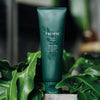 Men's
Men's
 Bestsellers
Bestsellers
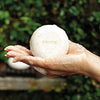 Body Care
Body Care
 Sun Care
Sun Care
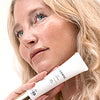 Makeup
Makeup
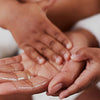 Mama & Baby
Mama & Baby
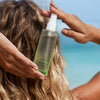 Hair Care
Hair Care
